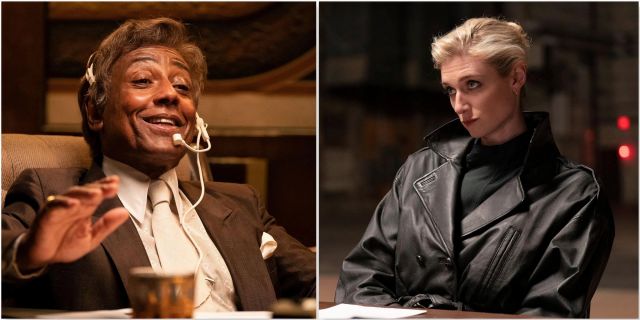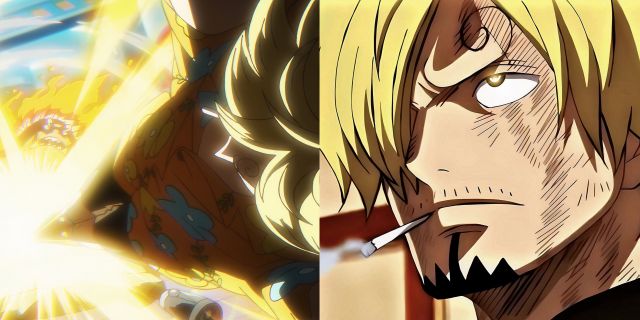Fans can tell a lot about a superhero movie from the way it communicates its action scenes. Superhero movies are generally action movies, and most of their problems must be solved through fighting. Shang-Chi and the Legend of the Ten Rings took inspiration from the long history of fun and engaging martial arts movies that came before it. While that entry is a massive improvement over most of the Marvel Cinematic Universe, it still has room for improvement before its long-awaited sequel.
Variety is a key element of the ever-expanding Marvel Cinematic Universe. Superhero movies have tons of genre inspirations, many of which can drag the final product in an entirely new direction. The more similar each Marvel project feels, the less patience they can expect from the audience. Shang-Chi is widely seen as one of Marvel’s greatest post-Endgame accomplishments. Its unique presentation provided most of the elements people enjoyed about the film. Every aspect that feels similar to the rest of the MCU is a detriment.
Shang-Chi has great action scenes
|
Director |
Destin Daniel Cretton |
|---|---|
|
Writers |
Dave Callaham, Destin Daniel Cretton, and Andrew Lanham |
|
Stars |
Simu Liu, Awkwafina, Meng’er Zhang, Tony Leung, etc. |
|
Release Date |
September 3, 2021 |
|
Runtime |
132 minutes |
|
Fight Coordinator |
Andy Cheng |
Shang-Chi has several of the best action sequences in the Marvel Cinematic Universe. The film wears its inspirations on its sleeves, with several clear references to the works of Jackie Chan and Crouching Tiger, Hidden Dragon. Director Destin Daniel Cretton worked extensively with Jackie Chan Stunt Team members and veterans, including fight coordinator Andy Cheng. The team’s influence bleeds through nearly every action scene. Fight choreography is more critical in Shang-Chi than it would be in any other Marvel movie. While many Marvel heroes rely on hand-to-hand combat, martial arts are Shang-Chi’s whole thing. His action scenes benefit from restraint, cleverness, and a manageable level of realism. This is obviously also true of Captain America, Black Panther, or Spider-Man films, but they all have additional options beyond old-fashioned punching and kicking. Iconic weapons, superpowers, and enhanced suits add a lot to fight scenes, but they also change the fundamental impact of every encounter. Shang-Chi‘s action scenes never lose their quality, but they do lose a bit of focus.
Shang-Chi‘s final action scenes get out of control

The best action scene in Shang-Chi is probably the bus fight. It’s frenetic, chaotic, fast-paced, consistently escalating, and hilarious. The editing deserves special attention. Most Marvel movies have very short average shot lengths. The number of seconds between cuts is far from an all-encompassing metric of quality, but it is an interesting microcosm of a film’s editing. Watching a fight from, say, Captain America: The Winter Soldier, it’s easy to notice incredibly quick cuts in some scenes. Black Widow often takes down a couple of henchmen in a couple of seconds with ten or more cuts to different angles. It’s disorienting, despite its exciting energy. The bus fight from Shang-Chi is more careful. The shots are longer, the camera angles are more interesting, and the CGI is used perfectly to sell an otherwise grounded scene. If every action set piece in the film worked like this early one, the film would be a better experience. Unfortunately, the movie’s back half relies more on Dragon Ball Z moves, big fantasy monsters, and characters standing around while glowing CGI does the work.
Shang-Chi is quite smart about how it uses supernatural elements. The go-to superpower is the titular Ten Rings, which are mystical weapons that take several forms. In the comics, Shang-Chi usually uses enhanced weapons like nunchucks and staffs to increase his combat potential. He also sometimes wields chi powers and psychic tricks, but his usual gimmick is extreme martial arts mastery. The Ten Rings function as armor, melee weapons, projectiles, and modes of transportation. Their wielders can effectively leap huge distances, fire hadouken blasts, defend themselves from harm, and generally fight with immense might. They offer an excellent way to enhance action scenes, but they also cut down on the pure nuts and bolts of a martial arts movie. They’re floating CGI objects that seem to respond to vague movements. This is arguably the one element that should fit in perfectly. Things like dragons, bat monsters, glowing arrows, and a big evil shadow creature all detract from the central fight choreography.
The problem with blockbuster movies making martial arts moves is that big budgets rely on escalation. The last fight scene can’t be smaller in scale than the first. Shang-Chi 2 has to find a way to raise the stakes without falling back on big CGI monsters and comical anime tricks. There’s still fight choreography in those massive, chaotic scenes, but they lack the impact and grounded effect of the first fight on the bus. Shang Chi 2 must escalate without abandoning its central goals. It’s got plenty of time to find a winner between the special effects and the usual techniques. They have the assets; they just have to figure out how to use them.











Leave a Reply